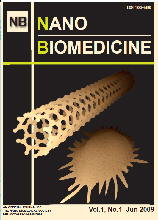As an evaluation of the biological safety of nanomaterials, in vitro experimental methods basically do not have the complicated problems of animal welfare compared to animal experiments, and may be statistically accurate. Predictive effects on human embryotoxicity are one of the most difficult areas in the biological safety assessment of nanomaterials. There is a possibility that models for the prediction of embryotoxicity can be produced by in vitro tests. In 1997, Spielmann et al. proposed the first in vitro embryotoxicity test method using mouse ES-D3 and 3T3 cells. We have proposed various methods that are further improvements of the EST method. We investigated the utilization of feeder cells, which was not available in the EST protocol for application to other type ES cells.
The biocompatibility of nanomaterials is quite different from that of body fluid-soluble chemicals. Nanomaterials have a large astronomical surface area relative to volume, and the mechanism by phagocytosis also affects them. For special toxicity such as embryotoxicity of nanomaterials, continuous research results are desired in the future.
抄録全体を表示
